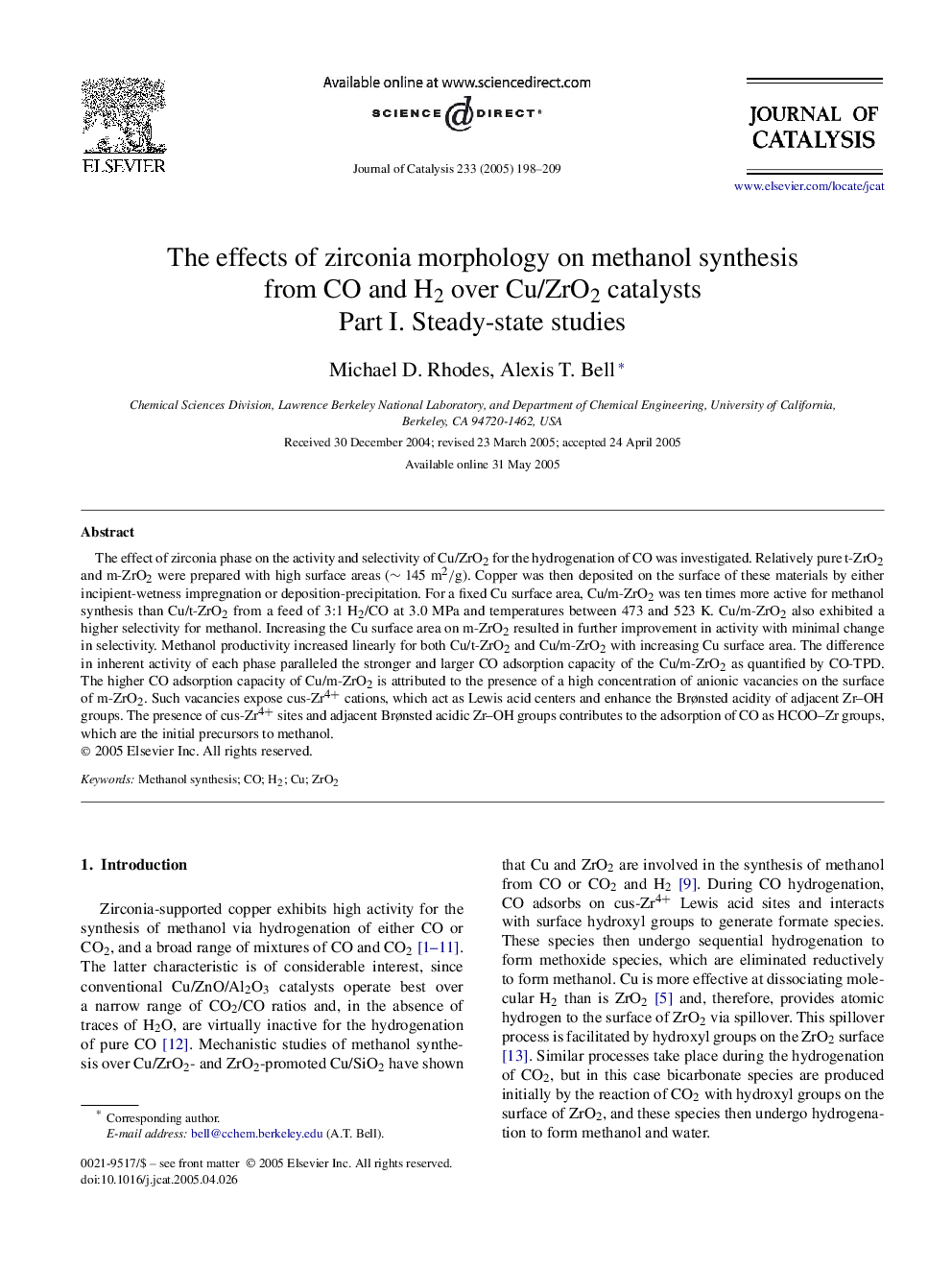| Article ID | Journal | Published Year | Pages | File Type |
|---|---|---|---|---|
| 10244787 | Journal of Catalysis | 2005 | 12 Pages |
Abstract
The effect of zirconia phase on the activity and selectivity of Cu/ZrO2 for the hydrogenation of CO was investigated. Relatively pure t-ZrO2 and m-ZrO2 were prepared with high surface areas (â¼145 m2/g). Copper was then deposited on the surface of these materials by either incipient-wetness impregnation or deposition-precipitation. For a fixed Cu surface area, Cu/m-ZrO2 was ten times more active for methanol synthesis than Cu/t-ZrO2 from a feed of 3:1 H2/CO at 3.0 MPa and temperatures between 473 and 523 K. Cu/m-ZrO2 also exhibited a higher selectivity for methanol. Increasing the Cu surface area on m-ZrO2 resulted in further improvement in activity with minimal change in selectivity. Methanol productivity increased linearly for both Cu/t-ZrO2 and Cu/m-ZrO2 with increasing Cu surface area. The difference in inherent activity of each phase paralleled the stronger and larger CO adsorption capacity of the Cu/m-ZrO2 as quantified by CO-TPD. The higher CO adsorption capacity of Cu/m-ZrO2 is attributed to the presence of a high concentration of anionic vacancies on the surface of m-ZrO2. Such vacancies expose cus-Zr4+ cations, which act as Lewis acid centers and enhance the Brønsted acidity of adjacent ZrOH groups. The presence of cus-Zr4+ sites and adjacent Brønsted acidic ZrOH groups contributes to the adsorption of CO as HCOOZr groups, which are the initial precursors to methanol.
Keywords
Related Topics
Physical Sciences and Engineering
Chemical Engineering
Catalysis
Authors
Michael D. Rhodes, Alexis T. Bell,
